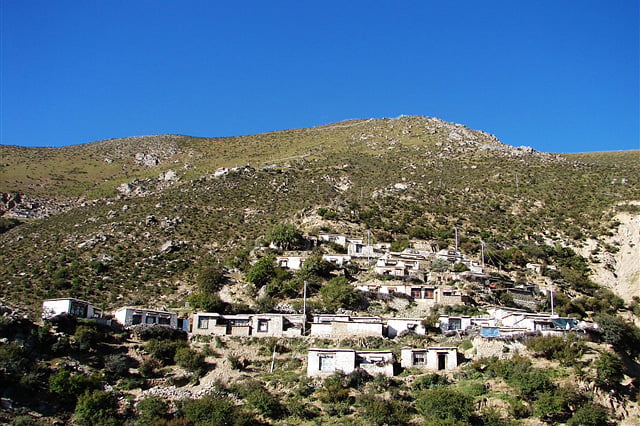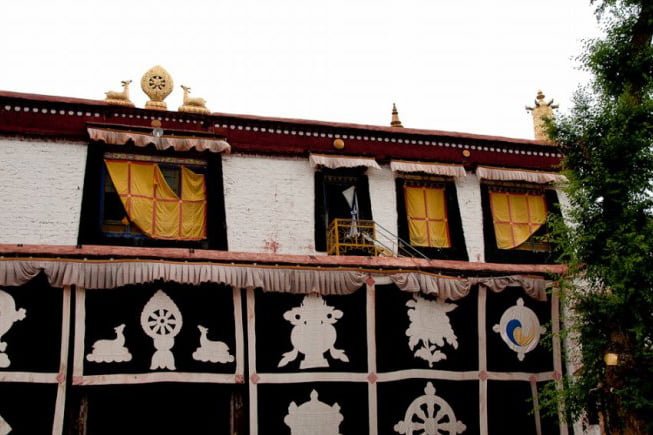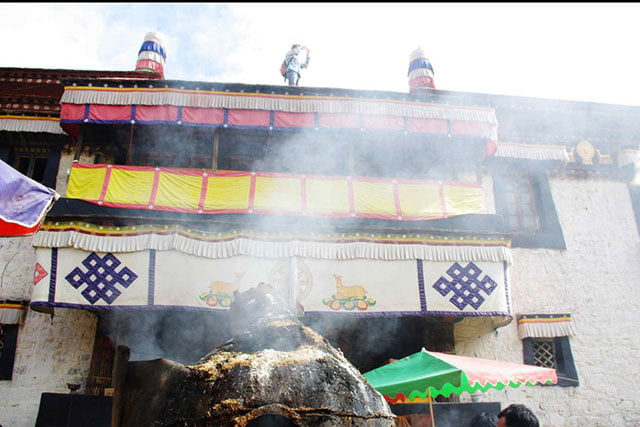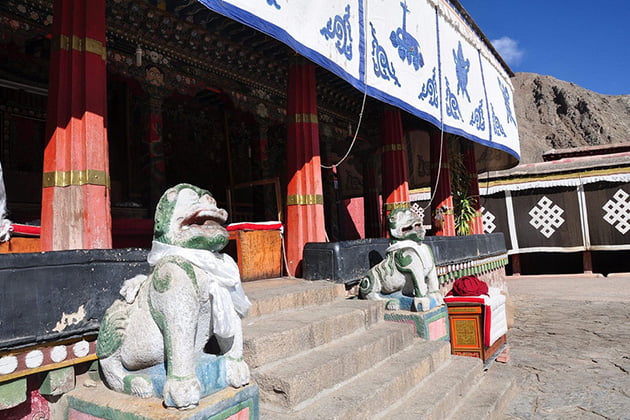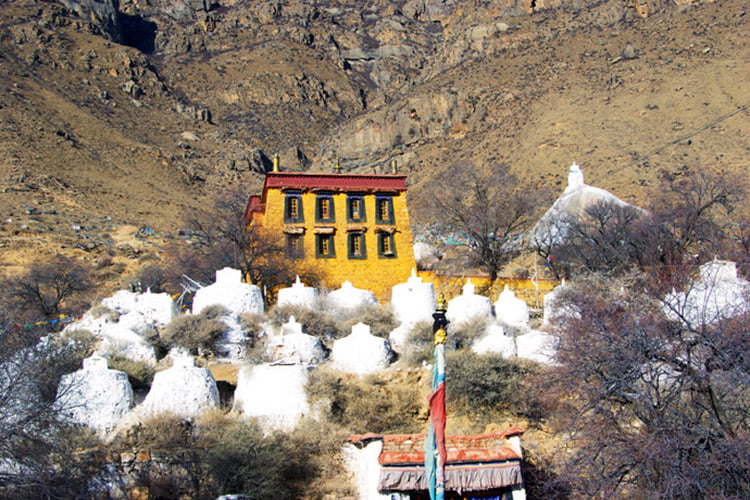About Mangpu Hot Spring

Tibet is not only famous for breathtaking landscape and unique Tibetan culture, but also hot springs with medical treatment. Mangpu Hot Spring in Lhatse is one of them. Tourists can enjoy Mangpu Hot Spring with medical treatment in Lhatse on the way from Lhasa to Everest Base Camp or Kathmandu.
Lhatse is a small modern town located in the valley of the Yarlung Zangbo River and about 151 km southwest of Shigatse. The Lhatse town is a popular lunch stop for tourists. If your time permits, you can stay one at this town and go to enjoy the Mangpu Hot Spring.
The Mangpu Hot Spring is about 12 kilometers east of the Lhatse town. Due to its great therapeutic effect, it is also called “cure hundreds diseases hot spring”.
Located at an elevation of 4800 meters, the Mangpu Hot Spring in Lhatse is recognized all around Tibet as a “unique hot spring which can cure hundreds of different diseases” due to its special therapeutic characteristics. Looking at a far distance, smog coils up the surface of the spring. The scene is magnificent, all of that make you feel mysteriously.
Spring water seeps from swallet of hillside. Local people say the lucidity of the spring water often changes; sometime it tends towards transparency and you easily see the bottom of pool, but at other times it turns to a milky white. When smelling the water, no special aromas can be detected.
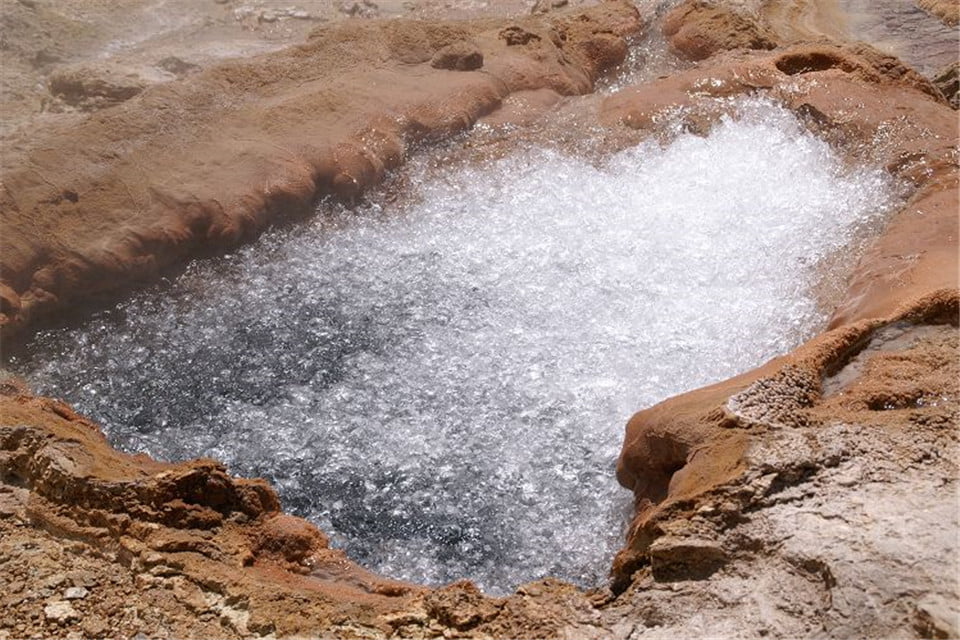
There are 5 spring mouths that can cure different diseases; spring water gets into two man-made water pools. Five Tibetan bungalows are located along the spring mouth, after etching by wind and rain, they are old and staleness.
Various people tramp over hill and dale, and then come to there and have a bath; in order to make use of natural hot spring to cure disease. Local people call it as “holy water”. Spring temperature is constant from spring to winter.
Generally, it maintain about 50 degree. It is a little hot. Accordingly, it is inappropriate to stay too long in the water. Following local customs, people should not put on their clothes immediately after bathing but rather cover themselves in a rug or quilt and lay down for about 15 minutes. By doing so people will sweat greatly, resulting in all kinds of germs or poisons from either inside the body or skin are expelled through the capillary vessels, by which one becomes healthy.
The hot spring is surrounded by fascinatingly picturesque scenery, so it is also a good place for sightseeing. The mountains surrounding the hot springs are steep, and tend to be a bronze color at the top and dust colored halfway up.
At the foot of the mountains yaks and sheep graze the grassland, close to a swamp. Colorful flowers and rare medicinal plants are inlaid into the green grass plains, creating spectacular scenery. Many wild animals live in the mountain area, such as Tibetan antelopes, Tibetan river deer, foxes, marmots, snow-land leopards, lynxes, and wolves.
Local people are kindhearted and their harmonious relationship with the natural environment depicts a Shambhala (mystical kingdom in the Himalayas) picture which most people dream to have. There are four lakes located at the top of mountain ranges, three ancient relics and two monasteries; Shapug Monastery and Sangpog Monastery.
On the way to the hot spring, many Mudrak caves and mud holes will also attract people to the places of Tibetan ancestors. The caves and monasteries give testament to forefathers also benefiting from the advantages of the hot spring.
Tips of Mangpu Hot Spring
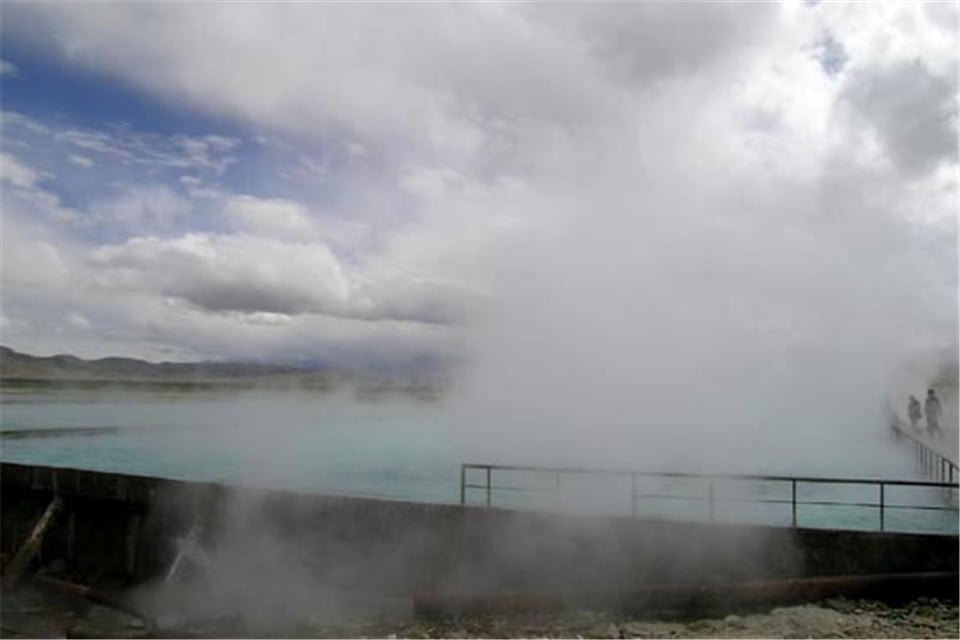
- Remember not to soak in within 1 hour before or after meals. Do not soak when you are hungry or drunk.
- Remember to take off all your metal jewelry or accessories before bathing, preventing them from being eroded by certain minerals.
- It is not advisable to soak for a long time. You can soak for 15 to 20 minutes at one time and rest for a while before take another bath.
- Avoid doing active exercises when bathing, especially in highland.
- Although the pool is not so deep, you can feel a strong buoyancy if you immerse into water.

